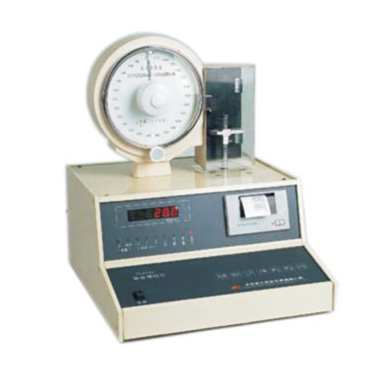
How to use curl elasticity detector
2025/01/08
Applicable Standards
GB / T14338
Technical Parameters
1. Initial length: 20mm
2. Lower class holder travel: 30mm
3. Displacement minimum indication: 0.01mm
4. Displacement reading error: 0.05mm (within 10mm)
5. Timing sub-file: 0.5,1,2min
6. Power: AC220V, 50HZ
7. Shape volume: 460 × 230 × 460mm

Operating Steps:
- Sample Preparation: Prepare suitable samples according to the testing standards and requirements. The samples should be representative, and their size, shape, and quality should meet the testing requirements.
- Instrument Calibration: Before testing, calibrate the detector to ensure its accuracy. This usually includes steps such as zero calibration, span calibration, and sensitivity calibration.
- Set Testing Parameters: Set the detector's testing parameters according to the testing standards and sample characteristics, such as testing speed, measurement range, data acquisition frequency, etc.
- Sample Installation: Correctly install the prepared samples on the detector, ensuring good and stable contact between the samples and the detector.
- Start Testing: Start the detector for testing. During the test, closely monitor the detector's operating status and test results to ensure a smooth testing process.
- Data Analysis and Processing: After the test is completed, analyze and process the test results. This includes calculating curl and elasticity values, plotting performance curves, conducting statistical analysis, and other steps. Based on the analysis results, the material's performance can be evaluated and optimized.
As a modern technology enterprise integrating R&D, manufacturing, sales, training, and services, Standard International Group (HK) Limited is committed to delivering more testing instruments to the market, providing testing instruments for textiles, leather, combustion, automotive interior and exterior trims, material environmental climate aging, etc., and non-standard customization is also acceptable. Targeted tests can be carried out according to customer requirements before purchase to ensure that the purchased instruments are applicable.
Previous: Characteristics of pneumatic fabric stiffness testing machine
N e x t : Scope of application of Taber abraser



